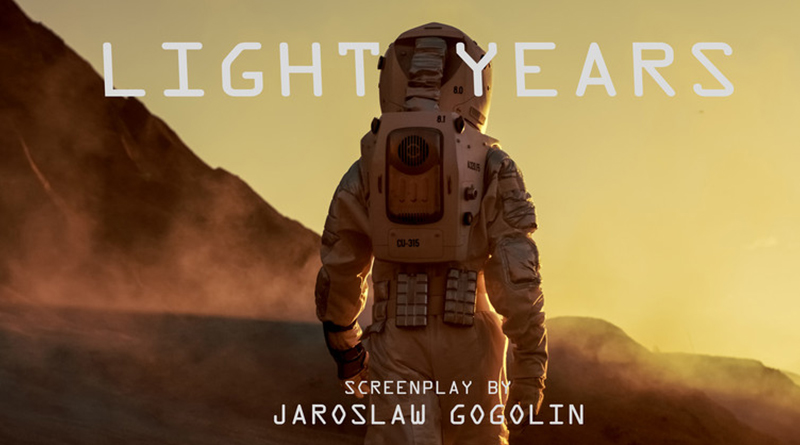LIGHT YEARS by JAROSLAW GOGOLIN

Written by Jaroslaw Gogolin/ Reviewed by Antonio Rozich
It’s arguable that the universe is as unknown as it was half a century, century, or even millennia ago. Although humanity is making immense progress researching countless corners of the universe, its vastness makes snail progress feel like a running cheetah.
Humanity still has a lot to go until we discover what the universe is, but when it comes to fantasizing, dreaming about what the universe might be, we’ve made quite a leap. From Le Voyage dans la Lune, Somnium, and Space Odyssey to Star Trek and Star Wars series. By exploring the universe, humanity has explored a great chunk of its own mind and creativity.
 ?Although most of us have never been and never will be in space, the great darkness suddenly isn’t as big as it used to and it isn’t as scary. We know there are black holes that can suck us into oblivion and there are likely aliens that either want to befriend us, eat us, or probe us. It’s no longer mysterious and unknown to write SF, especially about the space.
And yet, every now and then, a book, movie, or a mere script comes along that tingles that every sensation you felt watching Alien or Gravity. For now, Light Years by Jaroslaw Gogolin is that mere script; not even words on a paper, but digital letters on a glowing screen. And yet, it hits the bulls eye.
Starting slow, taking its time to describe the scenery, Gogolin introduces us to the two main characters of Light Years - Sam and Mira. The unlikely couple is on an unknown space station where they routinely do their work. Although in space, their life isn’t that much different from the life of a local market store clerk.
But unlike the average clerk, Sam and Mira don’t have much to do once their daily work is done. Food is the same tasteless jelly, they can’t go out for a leisure walk, and the veil of discussable topics has long since run dry. All they can do is marvel the universe outside.
This is the first instance where Gogolin’s tale strikes. In the first couple of pages, he reawakens the number one fear - the helpless fear of the infinite. Sam and Mira work not because they want to, not even so much because they have to. They work because there’s nothing else to do and the primal survival instinct isn’t allowing them to replace one nothingness for another.
It creates a great unease just thinking about a future where you spend a great portion of your life in an over-glorified, space ant hill. No joy, freedom, creative expression. Only you, limitless space, and limited possibilities.
As the story moves forward, Gogolin introduces us to life-threatening hardships of the universe. Regular meteor showers and ensuring the space station is operational are just some of the dangers. If eternal boredom doesn’t kill you slowly, a sudden meteor or lack of air will kill you rapidly.
The last element that makes the story rejuvenating is the mystery. Sam and Mira’s monotonous life is shaken up by the unknown. Furthermore, in a classic-like way, Gogolin uses the mysterious in the final parts of the story to rattle up everything you thought you knew. Each new scene shakes up the previous one as the tension builds up and settles down, only to go up again.
Finally, there’s one other element that could easily get overlooked but contributes to the atmosphere - the lack of dialogue. Through the entire script, Sam and Mira don’t share a single word. Even in the moments where one of them is a breath away from speaking, it falls short. The only 2 sounds that echo through the space station is music and a burst of occasional sombre laughter.
You know a script is great when each page creates a new image in your head. This is especially important with a script. Turning a script into a real movie is like translating a novel from one language to another. There are many small elements that can change the final feel of the novel.
But when the original is done in a way that the potential filmmaker can see the scenes, hear the sounds, and feel the atmosphere, suddenly, the great unknown becomes a home. And you welcome it with open arms.
?Although most of us have never been and never will be in space, the great darkness suddenly isn’t as big as it used to and it isn’t as scary. We know there are black holes that can suck us into oblivion and there are likely aliens that either want to befriend us, eat us, or probe us. It’s no longer mysterious and unknown to write SF, especially about the space.
And yet, every now and then, a book, movie, or a mere script comes along that tingles that every sensation you felt watching Alien or Gravity. For now, Light Years by Jaroslaw Gogolin is that mere script; not even words on a paper, but digital letters on a glowing screen. And yet, it hits the bulls eye.
Starting slow, taking its time to describe the scenery, Gogolin introduces us to the two main characters of Light Years - Sam and Mira. The unlikely couple is on an unknown space station where they routinely do their work. Although in space, their life isn’t that much different from the life of a local market store clerk.
But unlike the average clerk, Sam and Mira don’t have much to do once their daily work is done. Food is the same tasteless jelly, they can’t go out for a leisure walk, and the veil of discussable topics has long since run dry. All they can do is marvel the universe outside.
This is the first instance where Gogolin’s tale strikes. In the first couple of pages, he reawakens the number one fear - the helpless fear of the infinite. Sam and Mira work not because they want to, not even so much because they have to. They work because there’s nothing else to do and the primal survival instinct isn’t allowing them to replace one nothingness for another.
It creates a great unease just thinking about a future where you spend a great portion of your life in an over-glorified, space ant hill. No joy, freedom, creative expression. Only you, limitless space, and limited possibilities.
As the story moves forward, Gogolin introduces us to life-threatening hardships of the universe. Regular meteor showers and ensuring the space station is operational are just some of the dangers. If eternal boredom doesn’t kill you slowly, a sudden meteor or lack of air will kill you rapidly.
The last element that makes the story rejuvenating is the mystery. Sam and Mira’s monotonous life is shaken up by the unknown. Furthermore, in a classic-like way, Gogolin uses the mysterious in the final parts of the story to rattle up everything you thought you knew. Each new scene shakes up the previous one as the tension builds up and settles down, only to go up again.
Finally, there’s one other element that could easily get overlooked but contributes to the atmosphere - the lack of dialogue. Through the entire script, Sam and Mira don’t share a single word. Even in the moments where one of them is a breath away from speaking, it falls short. The only 2 sounds that echo through the space station is music and a burst of occasional sombre laughter.
You know a script is great when each page creates a new image in your head. This is especially important with a script. Turning a script into a real movie is like translating a novel from one language to another. There are many small elements that can change the final feel of the novel.
But when the original is done in a way that the potential filmmaker can see the scenes, hear the sounds, and feel the atmosphere, suddenly, the great unknown becomes a home. And you welcome it with open arms.


